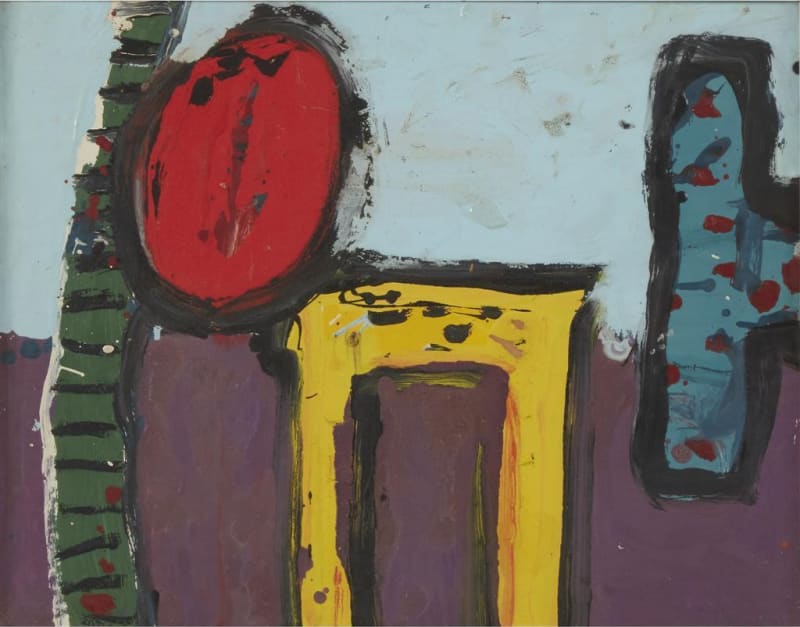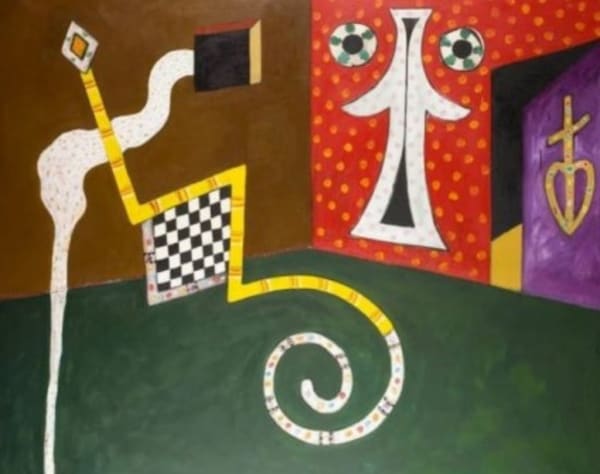Alan Davie BRITISH, 1920-2014
Alan Davie was one of Britain’s most internationally acclaimed artists in the 1950s and 60’s and is arguably Scotland’s most important artist of the twentieth century. He was the first British painter to realise and recapitulate the vitality and significance of American Abstract Expressionism.
Davie studied at Edinburgh College of Art from 1938-40. As a young man he developed a love of the arts, wrote poetry and played the saxophone in a jazz band. In 1945 Davie was deeply impressed by two exhibitions – Picasso at the V&A and Klee at the Tate. Not long after in 1948 he visited the Peggy Guggenheim Collection in Venice where he came across the paintings of Jackson Pollock. Davie was inspired by American Abstract Expressionism as well as Surrealism and the Cobra group.
In 1956 Davie made his first trip to the United States where he was the subject of a solo exhibition at the Catherine Viviano Gallery and was introduced to Robert Motherwell, Jackson Pollock, Franz Kline, Mark Rothko, and Willem de Kooning. Meeting that inspired some of the finest art work of his career.
Throughout his life Alan Davie obsessively drew and painted, producing paintings of startling originality, vitality and daring. As early as 1958 Alan Davie emphasised the importance in his work of intuition as expressed in the form of enigmatic signs. During the 1960s, both in paintings and in coloured lithographs, he represented such images with increasing clarity at the expense of gestural handling. Seeing and sensing the limits of abstract expressionism, Davie re-embraced image and symbol combining in heterodox fashion imagery derived from the understandings of the absolute in the cultures of the world and its governance of the realm which we inhabit.
The work that we show here is a magnificent example of Davie’s 1970’s style it is one of the largest and most impressive works in the 1971 Phantom in the Room series. Phantom in the Room No.9 takes a new look at his mysterious rooms of the early 1950s which were filled with such intensity and were generally sombre. Here we have a positively joyous palette, yet there is still a sense of brooding contrasted against forms which could equally have sprung from his best 1960s works. There is the familiar tight composition and careful balance and highly sensitive use of colour to produce an intriguing and strong painting. Phantom in the Room No.9 was in the Edinburgh Festival and is a seminal 1970s painting.


